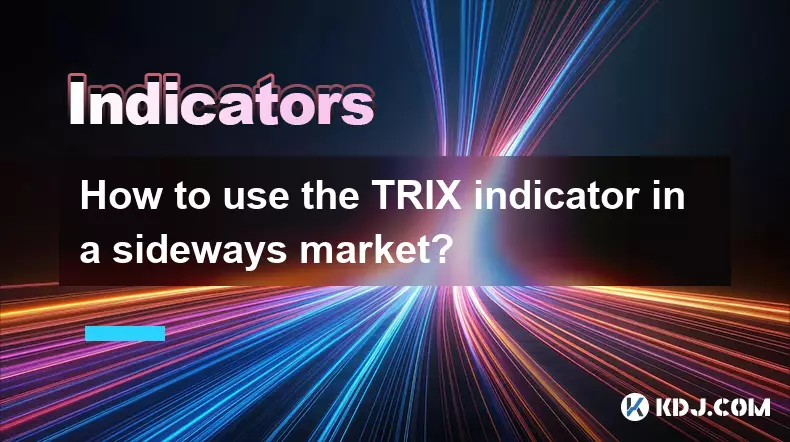-
 bitcoin
bitcoin $99296.318777 USD
-2.82% -
 ethereum
ethereum $3203.465899 USD
-6.84% -
 tether
tether $0.999590 USD
-0.03% -
 xrp
xrp $2.308913 USD
-4.00% -
 bnb
bnb $922.788929 USD
-3.53% -
 solana
solana $144.020807 USD
-5.89% -
 usd-coin
usd-coin $0.999798 USD
0.00% -
 tron
tron $0.291590 USD
-1.12% -
 dogecoin
dogecoin $0.163780 USD
-4.46% -
 cardano
cardano $0.526919 USD
-4.40% -
 hyperliquid
hyperliquid $37.888865 USD
-2.24% -
 bitcoin-cash
bitcoin-cash $510.515457 USD
-1.08% -
 chainlink
chainlink $14.436987 USD
-5.63% -
 stellar
stellar $0.267345 USD
-4.77% -
 unus-sed-leo
unus-sed-leo $9.175222 USD
0.53%
How to apply the KDJ indicator to multiple timeframes for analysis?
The KDJ indicator helps crypto traders spot overbought/oversold levels and time entries by aligning signals across multiple timeframes for higher-probability trades.
Nov 06, 2025 at 11:19 am

Understanding the KDJ Indicator in Crypto Trading
1. The KDJ indicator, also known as the Stochastic Oscillator with J-line adjustment, is widely used in cryptocurrency trading to identify overbought and oversold conditions. It consists of three lines: K (fast stochastic), D (slow stochastic), and J (a divergence line). Traders use these values to assess momentum and potential reversal points within volatile digital asset markets.
2. In the context of crypto assets like Bitcoin or Ethereum, price movements can be extremely rapid due to high volatility and 24/7 market activity. This makes timing entries and exits challenging. The KDJ helps by signaling when an asset may have moved too far too fast, suggesting a pullback could occur soon.
3. Each line in the KDJ reacts differently to price changes. The K line responds quickly, making it useful for short-term signals. The D line smooths out K’s fluctuations, offering confirmation. The J line, often more volatile, can highlight extreme conditions when it diverges significantly from K and D.
4. When applied correctly across multiple timeframes, the KDJ provides layered insights. A signal on a lower timeframe gains more weight if aligned with the trend indicated on a higher timeframe. For example, a buy signal on the 1-hour chart carries stronger conviction if the daily chart shows the KDJ emerging from oversold territory.
Multi-Timeframe Analysis Using KDJ
1. Start by analyzing the highest relevant timeframe—such as the weekly or daily chart—to establish the dominant trend. If the K line is above 50 and trending upward on the daily chart, the bias is bullish. This context prevents traders from taking counter-trend trades based solely on lower timeframe signals.
2. Move down to intermediate frames like the 4-hour or 6-hour charts. Look for alignment between the direction of the KDJ lines and the higher timeframe trend. A crossover of K above D in oversold zones on this level, while the daily KDJ supports upward momentum, increases the probability of a successful long entry.
3. Finally, drill into short-term frames such as the 15-minute or 1-hour charts. Use these for precise entry and exit points. A sharp rise in the J line beyond 100 here might indicate short-term exhaustion, even if the broader trend remains bullish.
4. Avoid acting on divergences or crossovers that contradict the higher timeframe readings. For instance, a sell signal on the 1-hour chart during a strong uptrend on the daily should be treated with caution unless accompanied by clear reversal patterns or volume spikes.
Practical Application in Cryptocurrency Markets
1. Consider Bitcoin’s price action after a major halving event. Volatility typically increases, leading to exaggerated swings. During such periods, the KDJ on the 4-hour chart may flash oversold readings repeatedly. Without referencing the daily KDJ, a trader might prematurely enter long positions each time.
2. Instead, wait until the daily KDJ confirms a shift—such as the K line rising above the D line after both were below 20. Once confirmed, dips on lower timeframes become valid opportunities rather than risky rebounds.
3. Altcoins often exhibit amplified moves compared to Bitcoin. Applying KDJ across multiple timeframes helps filter noise. For example, a sudden pump in a mid-cap altcoin might push the 15-minute KDJ deep into overbought territory (>80), but if the 1-day KDJ remains neutral and trending up, the rally may have room to continue.
4. Combining KDJ with volume analysis enhances reliability. A breakout accompanied by rising volume and a rising J line suggests strong momentum, whereas a fading move with shrinking volume despite a high J value warns of a potential trap.
Frequently Asked Questions
What are typical KDJ settings for cryptocurrency trading?Common settings are 9,3,3—meaning a 9-period stochastic with 3-period smoothing for K, and another 3-period average for D. Some traders adjust to 14,3,3 for less noise in longer-term strategies.
Can KDJ be used effectively during sideways markets?Yes, in ranging markets, KDJ excels at identifying turning points near support and resistance. Buy signals appear when K and D cross upward from below 20; sell signals form when they cross downward from above 80.
How does KDJ compare to RSI in multi-timeframe analysis?While RSI measures speed of price changes, KDJ incorporates momentum and relative closing position within recent ranges. KDJ tends to generate earlier signals but with more false positives. Combining both can improve accuracy.
Is KDJ suitable for automated crypto trading bots?It can be integrated into algorithmic systems, especially for mean-reversion strategies. However, due to lag and whipsaws in choppy conditions, it should be paired with filters like moving averages or volatility bands.
Disclaimer:info@kdj.com
The information provided is not trading advice. kdj.com does not assume any responsibility for any investments made based on the information provided in this article. Cryptocurrencies are highly volatile and it is highly recommended that you invest with caution after thorough research!
If you believe that the content used on this website infringes your copyright, please contact us immediately (info@kdj.com) and we will delete it promptly.
- Crypto Carnage: Navigating Selling and Liquidations in a Wild Market
- 2025-11-14 16:50:01
- Mohammed Siraj's First Spell Woes: An India Teammate's Critique
- 2025-11-14 14:40:02
- BTC, ETH, and Altcoin Picks: Navigating the Crypto Landscape
- 2025-11-14 14:50:01
- Coin Toss Tales: Temba Bavuma's Wager and India vs. SA Showdown
- 2025-11-14 12:50:01
- Shubman Gill, WTC Final, and the Coin Toss: A New Yorker's Take
- 2025-11-14 15:05:01
- Aerodrome Takes Flight: Unifying Ethereum DeFi Liquidity Across Chains
- 2025-11-14 15:10:02
Related knowledge

What's the best way to learn the TRIX indicator?
Nov 10,2025 at 12:39pm
Understanding the Basics of the TRIX Indicator1. The TRIX (Triple Exponential Average) indicator is a momentum oscillator designed to filter out short...

How do professional traders use the TRIX indicator?
Nov 06,2025 at 04:40pm
Understanding the TRIX Indicator in Crypto TradingThe TRIX (Triple Exponential Average) indicator is a momentum oscillator used by professional trader...

Can I use the TRIX indicator on my mobile trading app?
Nov 07,2025 at 07:40pm
The TRIX indicator, a momentum oscillator designed to filter out short-term fluctuations and highlight long-term trends, has become increasingly popul...

How to use the TRIX indicator in a sideways market?
Nov 10,2025 at 03:00pm
Bitcoin’s Role in Decentralized Finance Evolution1. Bitcoin remains the cornerstone of decentralized finance, serving as both a store of value and a b...

How does volume affect the signals from the TRIX indicator?
Nov 13,2025 at 07:39am
Understanding the TRIX Indicator in Cryptocurrency TradingThe TRIX (Triple Exponential Average) indicator is a momentum oscillator designed to filter ...

How to code a simple TRIX indicator script in Pine Script?
Nov 07,2025 at 06:20am
How to Code a Simple TRIX Indicator in Pine Script The TRIX (Triple Exponential Moving Average) indicator is widely used in cryptocurrency trading to ...

What's the best way to learn the TRIX indicator?
Nov 10,2025 at 12:39pm
Understanding the Basics of the TRIX Indicator1. The TRIX (Triple Exponential Average) indicator is a momentum oscillator designed to filter out short...

How do professional traders use the TRIX indicator?
Nov 06,2025 at 04:40pm
Understanding the TRIX Indicator in Crypto TradingThe TRIX (Triple Exponential Average) indicator is a momentum oscillator used by professional trader...

Can I use the TRIX indicator on my mobile trading app?
Nov 07,2025 at 07:40pm
The TRIX indicator, a momentum oscillator designed to filter out short-term fluctuations and highlight long-term trends, has become increasingly popul...

How to use the TRIX indicator in a sideways market?
Nov 10,2025 at 03:00pm
Bitcoin’s Role in Decentralized Finance Evolution1. Bitcoin remains the cornerstone of decentralized finance, serving as both a store of value and a b...

How does volume affect the signals from the TRIX indicator?
Nov 13,2025 at 07:39am
Understanding the TRIX Indicator in Cryptocurrency TradingThe TRIX (Triple Exponential Average) indicator is a momentum oscillator designed to filter ...

How to code a simple TRIX indicator script in Pine Script?
Nov 07,2025 at 06:20am
How to Code a Simple TRIX Indicator in Pine Script The TRIX (Triple Exponential Moving Average) indicator is widely used in cryptocurrency trading to ...
See all articles










































































